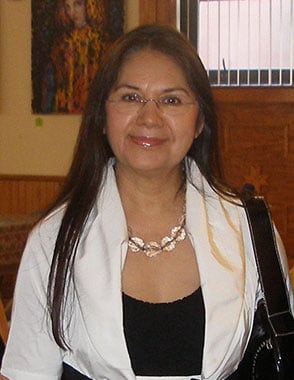
As numerous forgery-related lawsuits against the now-shuttered Knoedler & Co. gallery, its former president Ann Freedman, and Long Island dealer Glafira Rosales wind their way through the legal system, a startling and perhaps unintentionally hilarious detail in the massive fraud scandal was unveiled in the New York Times. A document in one of the civil suits reveals that one of the paintings, purported to be by Jackson Pollock, featured what should have been a clear red flag: the signature was misspelled “Pollok,” instead of “Pollock.”
According to the Times the “Pollok,” a 12-by-18-inch drip painting, was dated 1949. It is one of 40 works that Rosales supplied to Knoedler and it was sold directly to Freedman and her husband for $280,000, according to gallery records. Freedman and Knoedler have adamantly maintained they were unaware of any authenticity problems with any of the works Rosales supplied, despite the fact that all emerged from a cache owned by a secret source who was always referred to as “Mr. X” (and sometimes his son, Mr. X, Jr.). Freedman’s attorney Nicholas Gravante Jr., told the Times, “If Ann Freedman had any questions about these works, she and her husband would not have invested hundreds of thousands of dollars in them.”
Luke Nikas, another Freedman attorney, told the paper via email that a conservator had concluded the work was genuine. “It is absurd to believe that Ms. Freedman would have paid nearly $300,000 for the work, asked a world-renowned expert to examine the work, hung the work openly in her apartment for over a decade, if she knew the work was a forgery or if she purchased the work to keep it hidden from critical eyes.”
Buyers Are Not Buying It
But buyers who spent millions and got stuck with what ultimately turned out to be fake Mark Rothkos, Robert Motherwells and Willem de Koonings, are not buying it. Ten clients have sued the gallery and Freedman, asserting that they knew, or should have known, that the works were fake.
Freedman also owned a share in another “Pollock” supplied by Rosales “where Pollock’s name was spelled correctly,” the Times notes. That work was sold to former Goldman Sachs executive Jack Levy for $2 million in 2001. Levy later returned it to the gallery and got his money back after an expert panel convened by the International Foundation for Art Research (IFAR), said it could not authenticate the work.
John Cahill, an attorney for John Howard, a collector who purchased a fake de Kooning, said “Freedman, Knoedler, and their so-called ‘experts’ claim not to have seen forgeries even when it was literally (mis)spelled out for them.”
Rosales, her former boyfriend Jose Carlos Bergantiños Diaz, and his brother Jesus Angel Bergantinos Diaz, have all been charged in the fraud. The Diaz brothers were arrested in Spain in April. They are free on bail and the US Attorney’s office has not yet commented on possible extradition proceedings. Rosales pleaded guilty last September to wire fraud, tax evasion, and knowingly selling fake art. She faces a maximum of 99 years in jail on the combined counts. She agreed to forfeit $33.2 million, including her home in Sands Point, New York, and to pay the maximum restitution of $81 million. She was due to be sentenced in March but the sentencing was tentatively postponed until September, reportedly because of a secret document that was filed with Manhattan federal court on March 14.